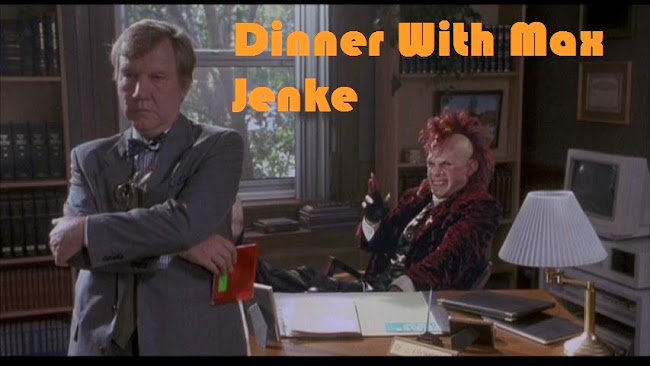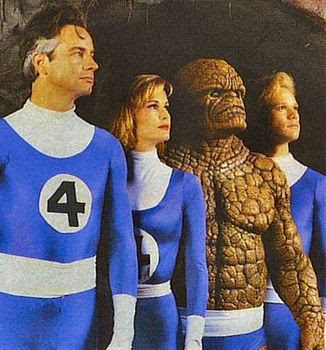 An A-budget, ultra-gory ninja movie seems like an unlikely candidate for a holiday release but yet here we are with Warner Bros.' Ninja Assassin raining a hail of shurikens on Thankgiving weekend audiences. Directed by James McTeigue (V for Vendetta) and written by Matthew Sand and J. Michael Straczynski, Ninja Assassin can't quite be called a throwback to the ninja movies of the '80s - outside of the casting of ninja movie superstar Sho Kosugi (Enter the Ninja, Revenge of the Ninja, and almost any '80s movie with 'ninja' in the title), it isn't aiming for nostalgia - instead this feels more indebted to modern anime and comic books than to the kind of ninja movies that used to have the Cannon Films logo on them. Those with fond memories of growing up on those earlier ninja romps might be put off by Ninja Assassin's dour tone but as ultraviolent entertainment, Ninja Assassin gets the job done.
An A-budget, ultra-gory ninja movie seems like an unlikely candidate for a holiday release but yet here we are with Warner Bros.' Ninja Assassin raining a hail of shurikens on Thankgiving weekend audiences. Directed by James McTeigue (V for Vendetta) and written by Matthew Sand and J. Michael Straczynski, Ninja Assassin can't quite be called a throwback to the ninja movies of the '80s - outside of the casting of ninja movie superstar Sho Kosugi (Enter the Ninja, Revenge of the Ninja, and almost any '80s movie with 'ninja' in the title), it isn't aiming for nostalgia - instead this feels more indebted to modern anime and comic books than to the kind of ninja movies that used to have the Cannon Films logo on them. Those with fond memories of growing up on those earlier ninja romps might be put off by Ninja Assassin's dour tone but as ultraviolent entertainment, Ninja Assassin gets the job done.First-off, following in the gore-soaked footsteps of Rambo and Punisher: War Zone (both 2008), Ninja Assassin proves that the MPAA no longer gives a shit. Seriously, I recently rewatched Friday the 13th Part VIII: Jason Takes Manhattan (1989) and to see what the MPAA wouldn't allow in that film (like, a quick shot of a spear being twisted in someone's gut or something) compared to the explicit, full-on dismemberings and decapitations seen here is to marvel at what an R-rating means today. Ninja Assassin would've be unreleasable in its current form twenty - or even ten - years ago (pics from Ninja Assassin would've gotten GoreZone banned from magazine racks just as quickly as anything from Intruder, I'll tell you that!). Now it's a free for all. No complaints here - but I just wonder when the big turnaround happened. Maybe Hannibal (2001) opened the door and Passion of the Christ (2004) kicked it down.
Whatever the case, Ninja Assassin is far from a dry affair. But besides its gratuitous gore, does Ninja Assassin have much else to offer? Well, no - but the gore IS outstanding. Yes, there's a lot of CGI blood, which I guess still rankles some viewers, but I think it works in the context of the stylized world that McTeigue is going for here. As for the action itself, some may be disappointed that so many fight scenes are staged in dark environments but for me, visibility didn't seem like a major issue. I expect McTeigue just believes that ninjas usually work in the shadows and I have to agree on that point. The Cannon Films always had a lot of brightly lit, daytime fight scenes but, really, that seems incongruous to the methods of the ninja. Also, to see ninjas in bright light is to essentially be watching people jumping around in their pajamas. That might've played just fine in the '80s but dammit, audiences are more sophisticated now!
The story of Ninja Assassin is standard issue all the way - a young orphan raised by a ninja clan grows up to rebel against his sadistic mentor - but as a hook to hang fight scenes on, it works. What's more damaging to the film is that the acting is so bland across the board. Rain, as the ninja clan-defying Raizo, looks perfect for his role and he's totally convincing in the fight scenes but as a charismatic presence - forget it. Naomie Harris is nearly as personality-free as an Interpol agent chasing down rumors of ninjas (I remembered her being much better in 28 Days Later). Ditto for Ben Miles as the boss of Harris' character. Kosugi is fine (and still convincing as a bad-ass) but as his role calls for him to be stoic at all times, he can't add much life to the movie.
With so little human interest to hold our attention, how much one enjoys Ninja Assassin will depend entirely on how much of a ninja action geek they are, and how accepting they are of the style McTeigue has brought to his film. Some might've preferred that McTeigue have gone more old-school in his methods but this is one ninja pajama party that I was happy to attend.













